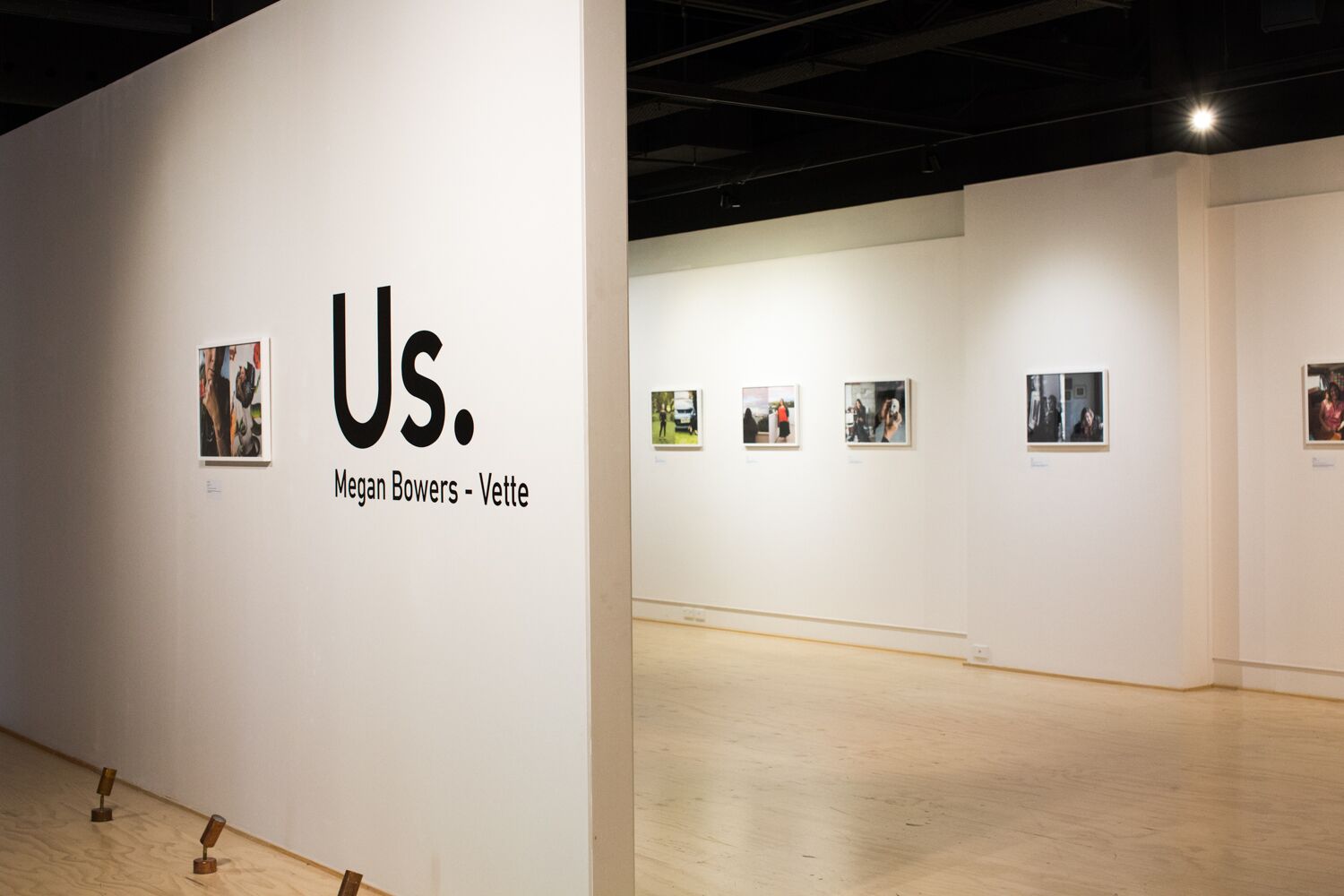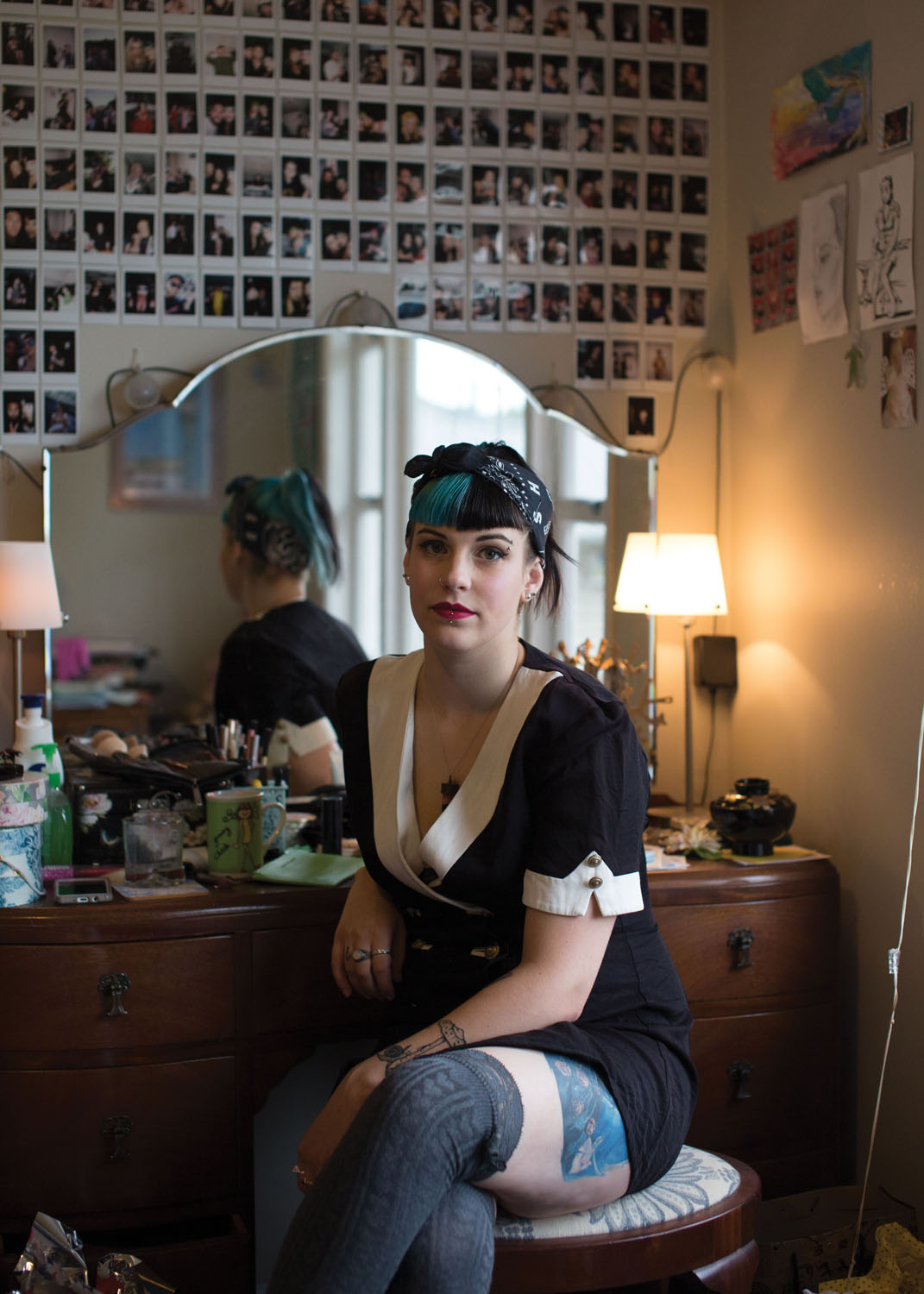The 'Us'. Project - Megan Bowers-Vette
Us.
Megan Bowers-Vette
Exhibition: Us. Whangerei Art Museum Te Manawa Toi, 28 August - 29 September, 2017
Book: Us. book of stories 270 pages, 250mmx270mm with debossed cover.
Website: https://www.meganbowersvette.com/new-page-1/
Reviewed by Cathy Tuato’o Ross
The Us. project (exhibition, book, website) is a collected action of unity, that makes a beautiful and significant contribution of voices and faces to a larger conversation about sexual abuse in our families and communities. While New Zealand social mores still make discussions of consent, abuse, recovery and reporting uncomfortable and sometimes even unwelcome, the mood is changing. Megan Bowers-Vette’s Us. project predates the #metoo movement, but has striking resonances. Sexual abuse is increasingly acknowledged as being pervasive, excused (even permitted), ignored, massively under-reported, and, where reported, having an unsatisfactory rate of conviction. The shame is ours, as families, communities and societies but does not belong to the victims and survivors. It is time to talk.
Megan Bowers-Vette, a photographer living and working in Whangarei, is herself a survivor of childhood sexual abuse. Her portrait and narrative is included as one of the 50 in her ‘show and tell’ project. Participants are self-selected; they have volunteered their names, their faces and their stories about living with sexual assault. As a result of the open invitation to be part of Us. there has been no recourse to stereotyping, no individuals are expected to be representatives for others and no experiences have been rated or undermined as more or less worthy for inclusion. The eyes that meet (or avoid) our gaze on the pages and gallery walls belong to women of all ages, and to men. They are not anonymous. They have stepped into the light. The names and identities of the offenders and perpetrators have been omitted, for legal as well as personal reasons. This is not their moment. They can stay in the murky dark.
Us. at Whangerei Art Museum Te Manawa Toi, 2017. Photo supplied.
Clara. Photo by Megan Bowers-Vette
Us. was showcased in the white box of the Whangarei Art Museum gallery, with it’s carefully arranged spotlights, it’s respectful hush and it’s cool humidity-controlled environment. In this manifestation of the project, the images came to the fore, while the texts were available but avoidable (and for many in the audience, simply unencountered). The exhibition is comprised of 50 framed pairs of photographs, one diptych per participant. Megan has brought her considerable photographic experience and skill to the project, however there is also an important element of collaboration in the making of the portraits. For many, the process of engaging in the conversation, of making portraits and writing narratives, has been a been a process of re-examination and reframing of both past and future. The photographs exist now as still points in a continuum of lived experience.
The paired photographs are the glamour, the texts are the grit (and in the book, the balance between the two is reversed). The gallery environment serves to elevate and isolate, being outside of daily experience. It is windowless, but windows feature regularly in the photographs. Light, in all of the images, is soft and seductive, with flares and dappled shadows, soft focus and narrow depth of field. Frequently, the gentle interior lighting is from side windows while outdoors the light is the muted grey of evening or a gently overcast day. The clever lighting makes the portraits very approachable. They are automatically beautiful and easy in the way that fashion photography is easy. This sense of familiarity, of the shared visual language with lifestyle magazines for example, is reinforced by the presentation of images in pairs, framed without spaces or borders, like a double page spread.
Megan Bowers-Vette was clear that she wanted to change the visual language of images dealing with issues of sexual abuse. She has intentionally shied away from making black and white photographs, as portraits are collaborative images, not journalistic assignments. There are no visual references to newspaper crime reportage. Nicole M, one of the participants, explains, in her own words, the power and the pressure of perception and representation.
“Expected code of conduct for ‘rape victims.’
Nicole M. Photo by Megan Bowers-Vette
1. You must be quiet. We feel terrible for you, but we don’t really want to hear about it. It makes us uncomfortable and forces us to confronts ideas that we prefer not to think about.
2. You must be modest. You’ve been raped before, you’ve learned your lesson, you must cover yourself up. We’ve seen the rape victims on tv – they cover themselves in oversized sweatshirts and layers of protection. That is appropriate. Do that.
3. You must not like sex, and you certainly mustn’t admit it out loud. How could you possibly? Rape victims are traumatised and damaged and it’s just plain incomprehensible how you could want to have sex again after that experience.
Well Fuck That.”
(www.usproject.online/home/2017/10/19/why-i-posed-naked-for-a-book-about-sexual-assault-and-why-its-not-contradictory)
The book of Us. is initially as seductive, in that is a lovely object, tastefully designed by Heather Mason. However, while the photographs have a polish, the texts which run into the thousands of words for each of the 50 participants, are raw. In the book, the photographs are illustrations to largely unedited first person accounts of violation and abuse, hurt and healing. The stories are harrowing to read, and quite often loop around in a stream of consciousness sort of fashion. The bravery and determination of the women and men, to not be destroyed but to survive and to have to capacity to thrive, to forgive and to love is detailed repeatedly. Alongside this story of endurance, and refusal to be defined by the actions of others, is a scathing review of the support, health and law enforcement services. Again and again, people are failed by their own families, the people they turn to for help, the police. This is most definitely not an exhibition catalogue, and as such, is, I think, designed for a wider audience.
Us. will be exhibited at other venues around New Zealand, although times and places are still being confirmed.
The Us. book of stories is available directly from the Us. Project website.
Dr Cathy Tuato’o Ross is an independent artist, writer and researcher who lives on the edge of Whangarei Harbour with her family.
The "Us." project has also been profiled by:















